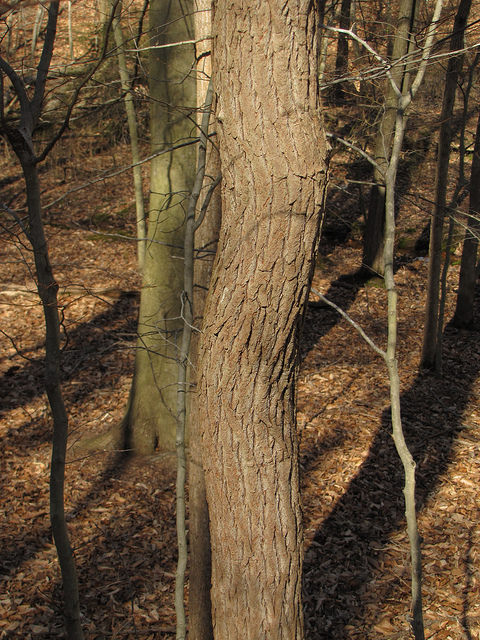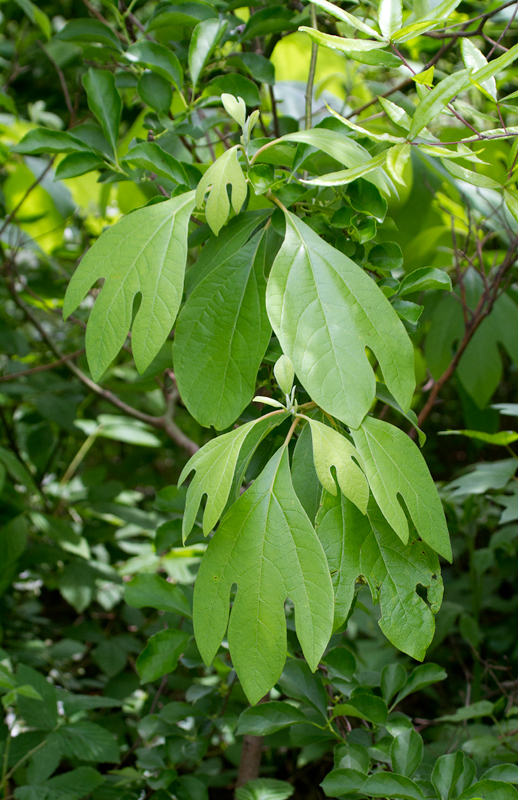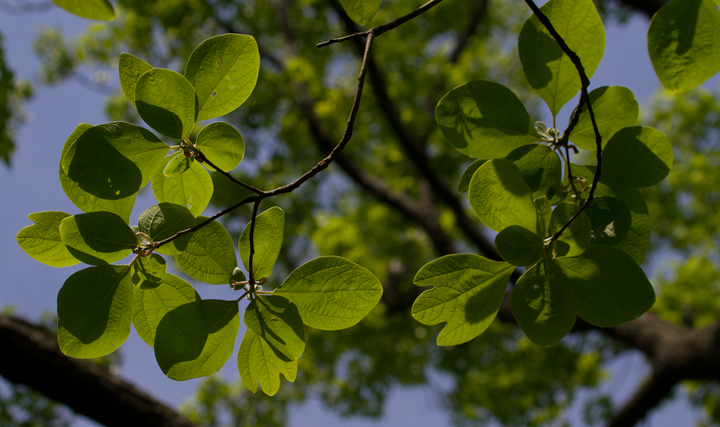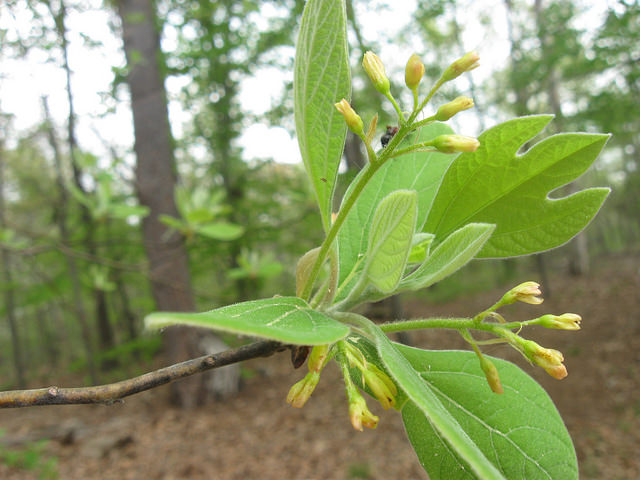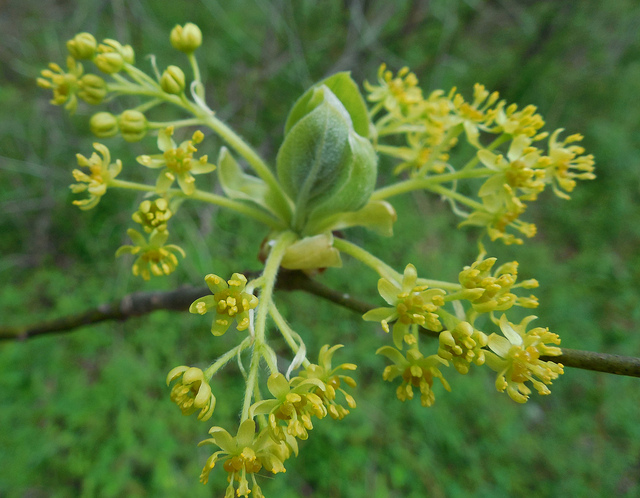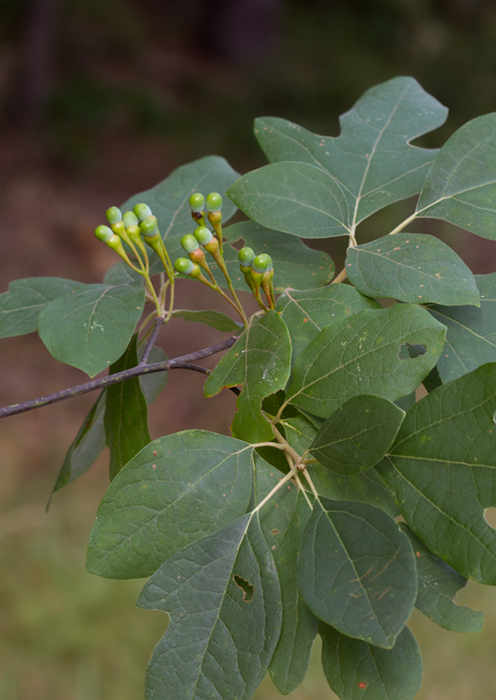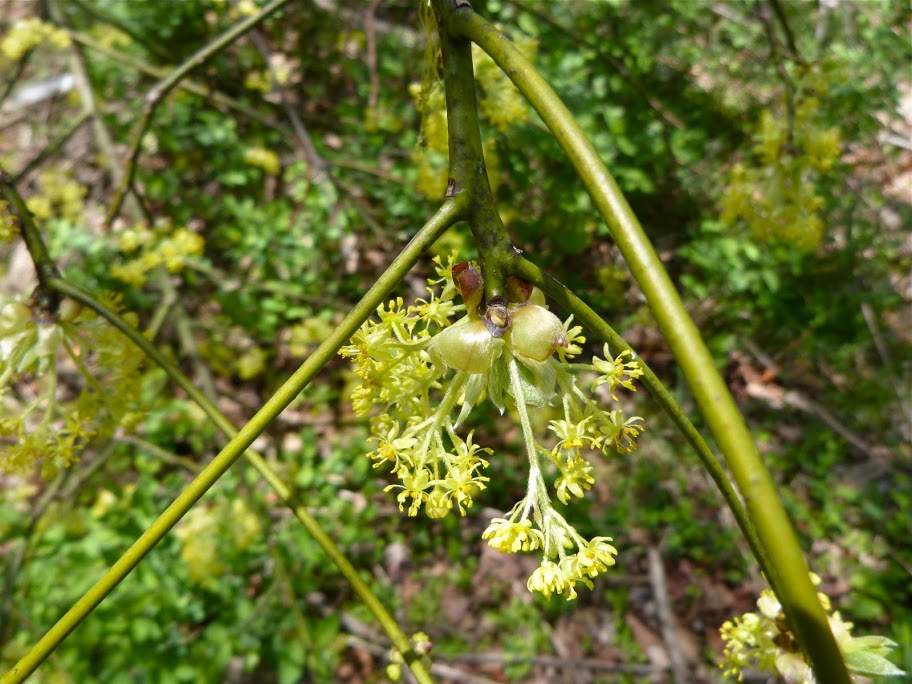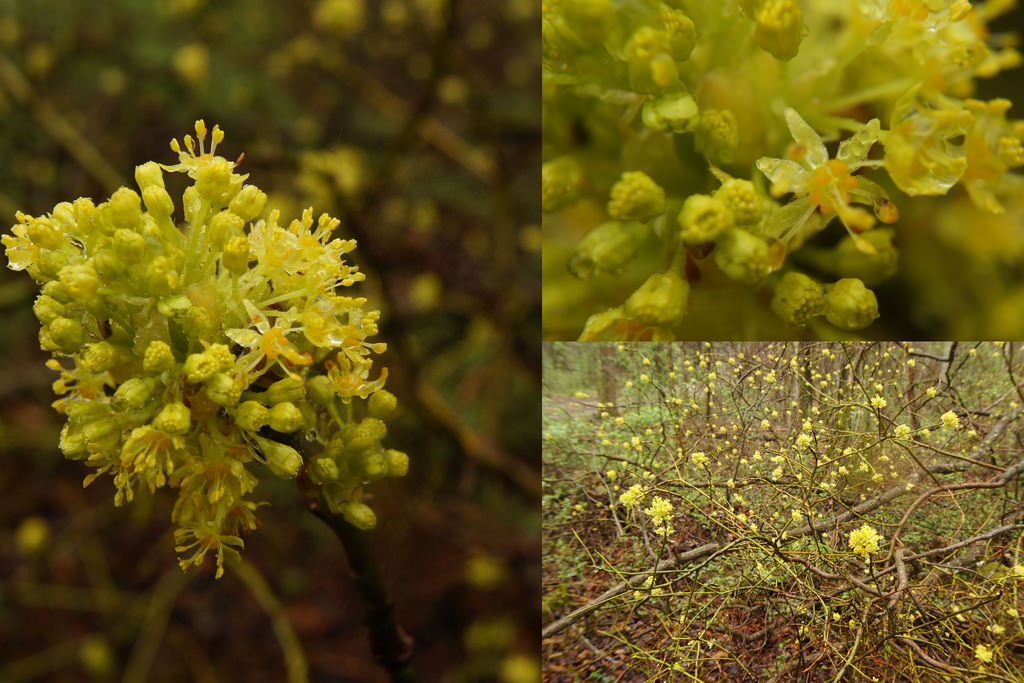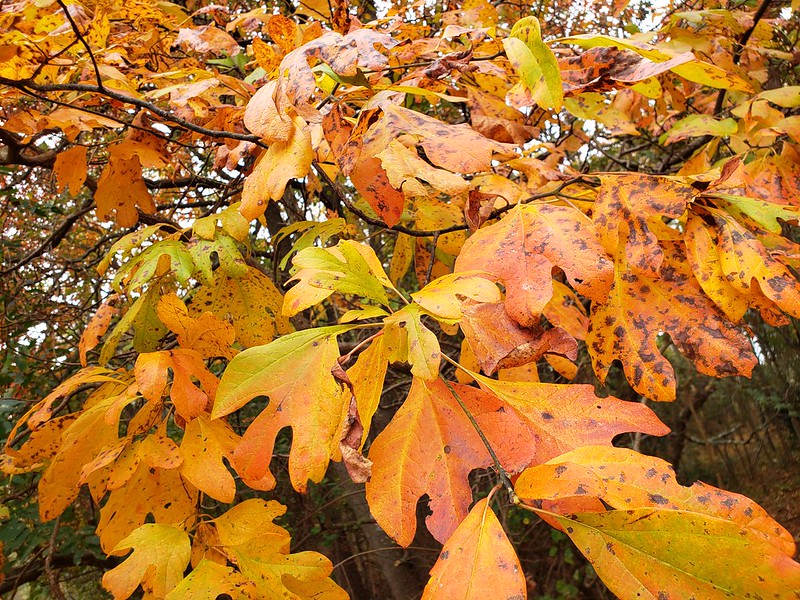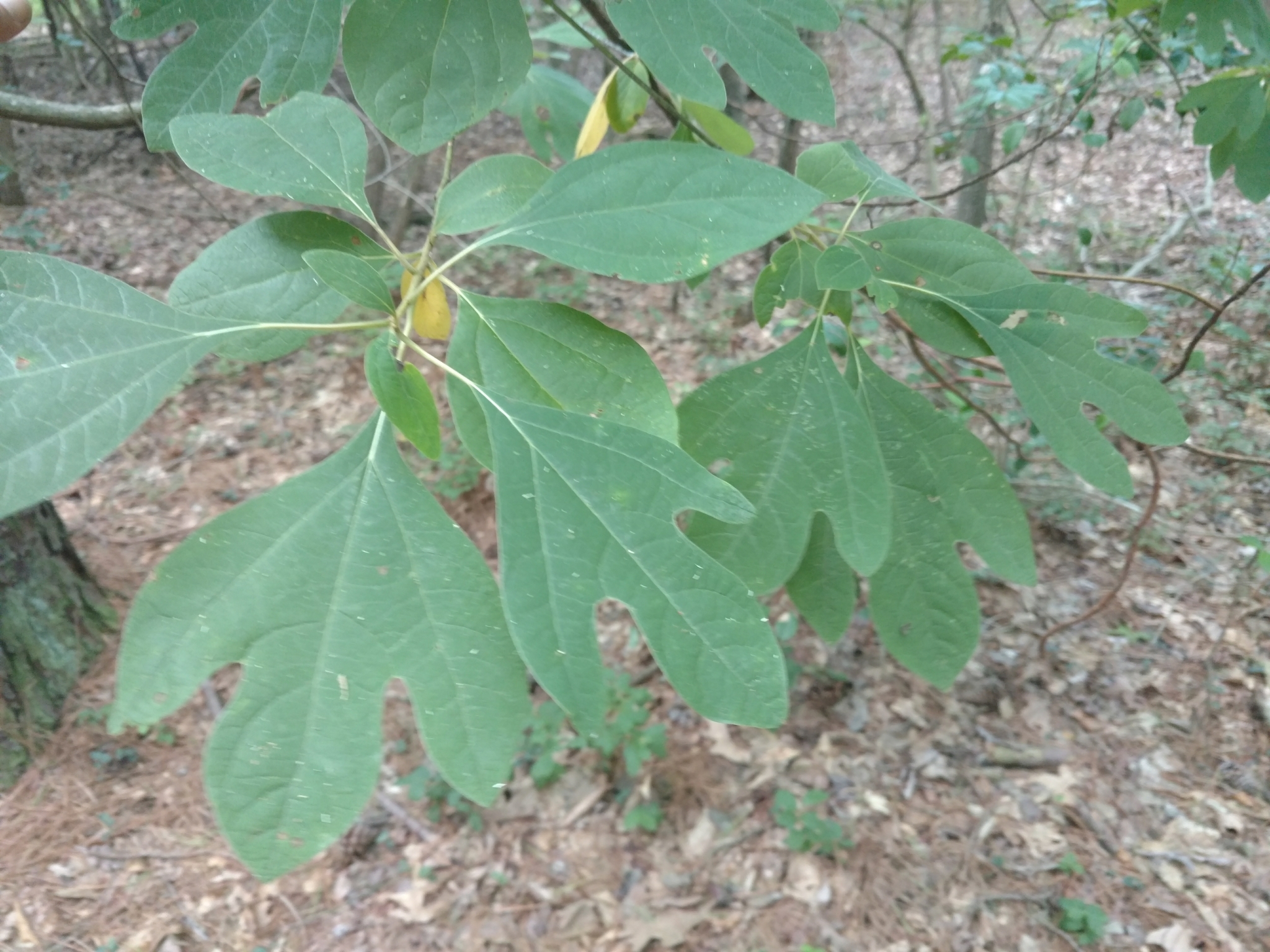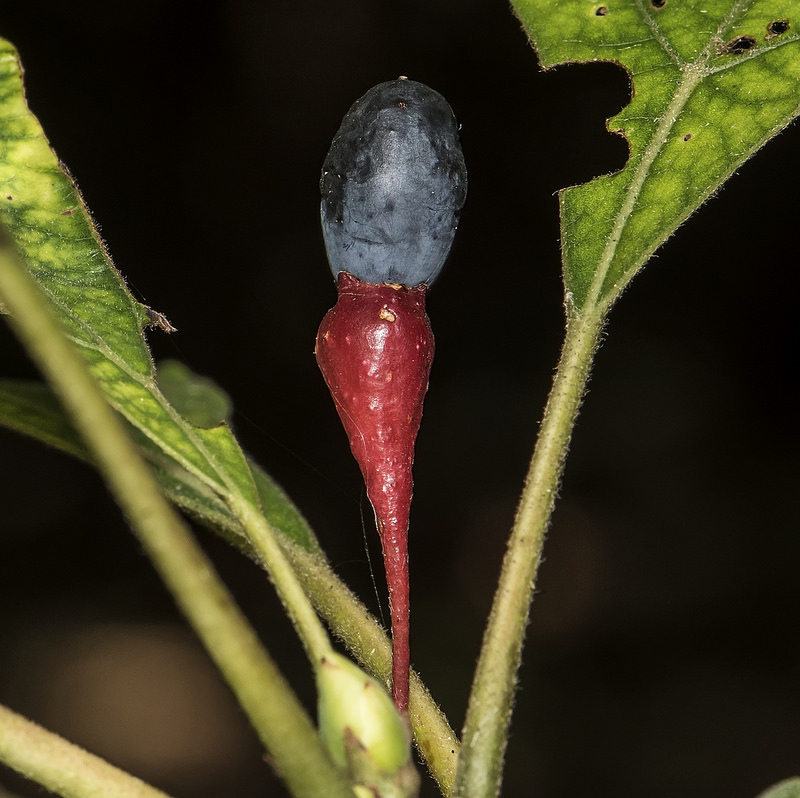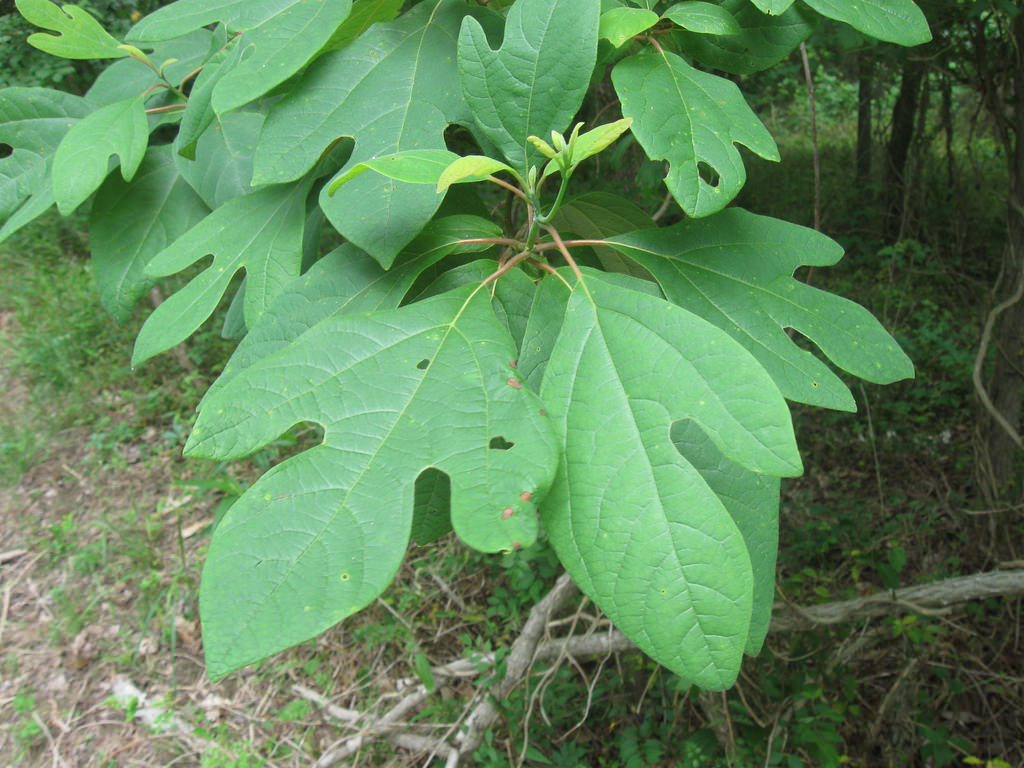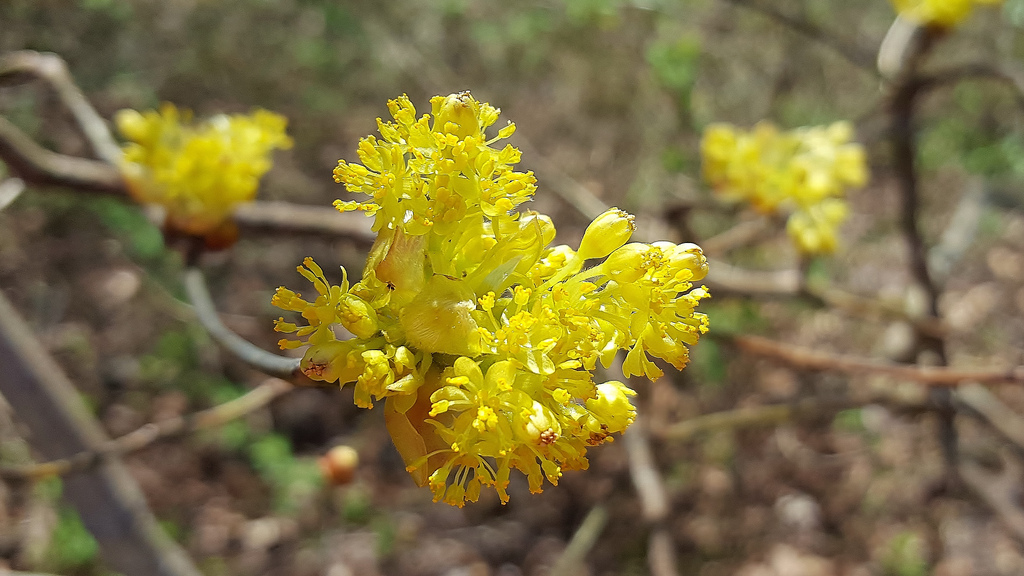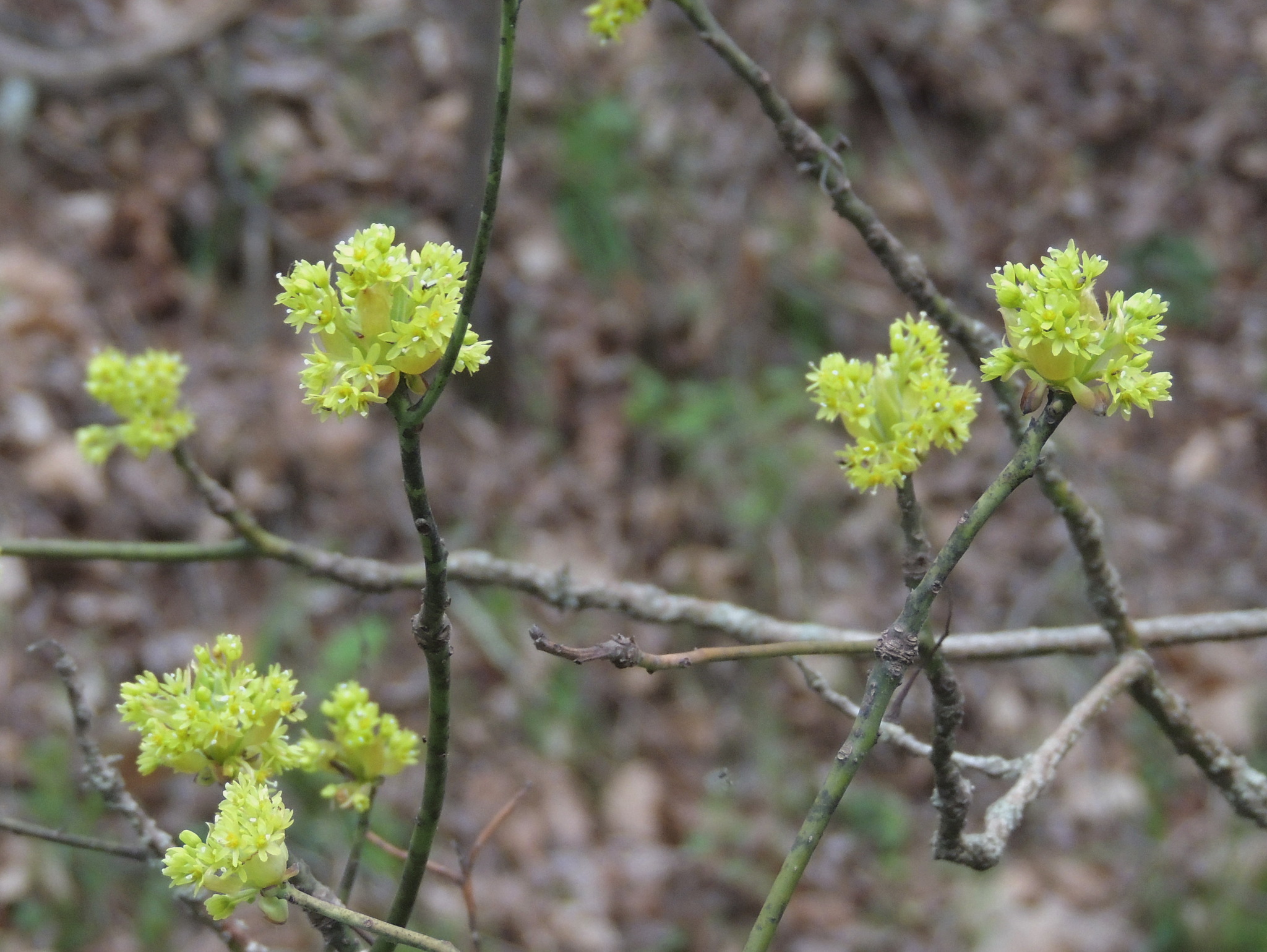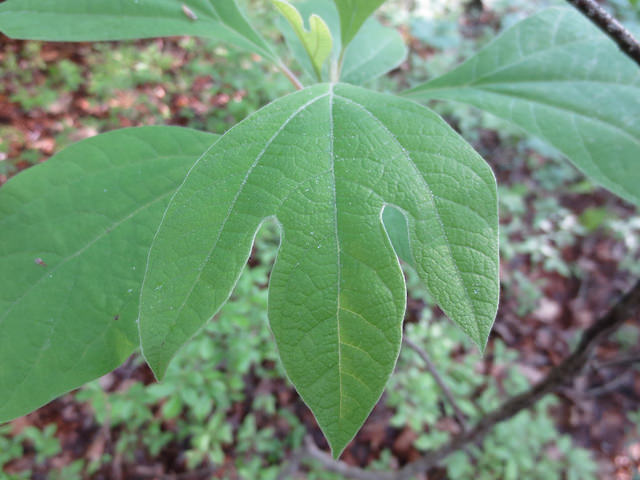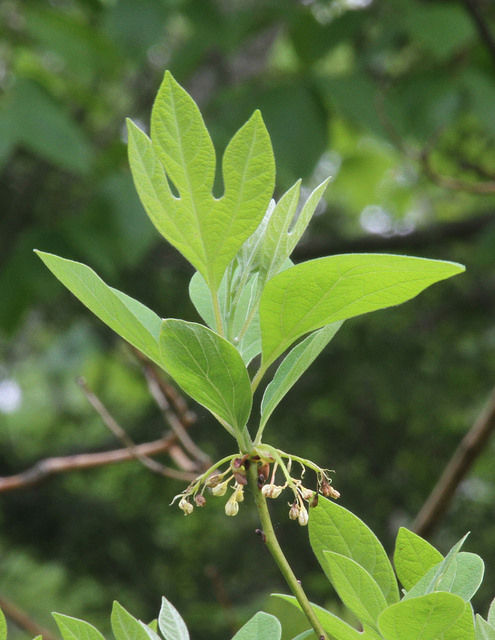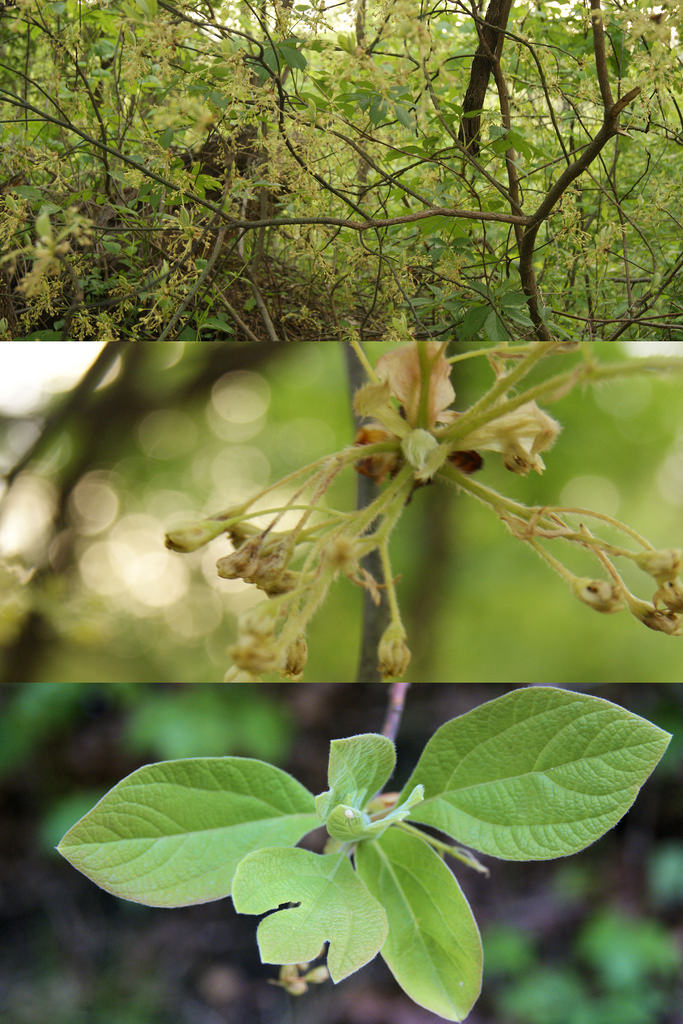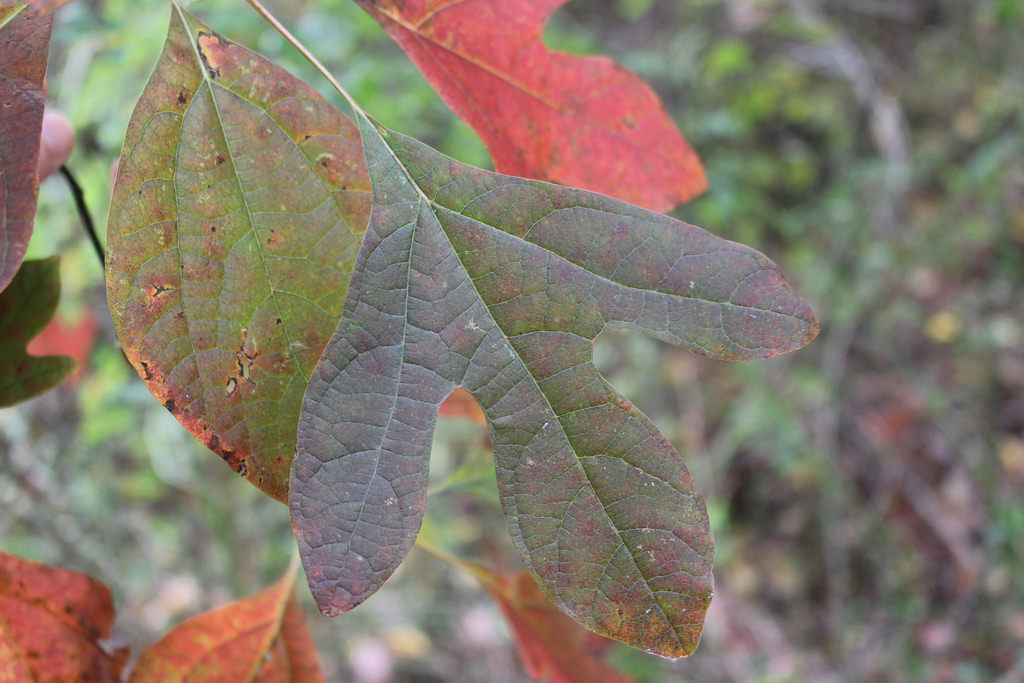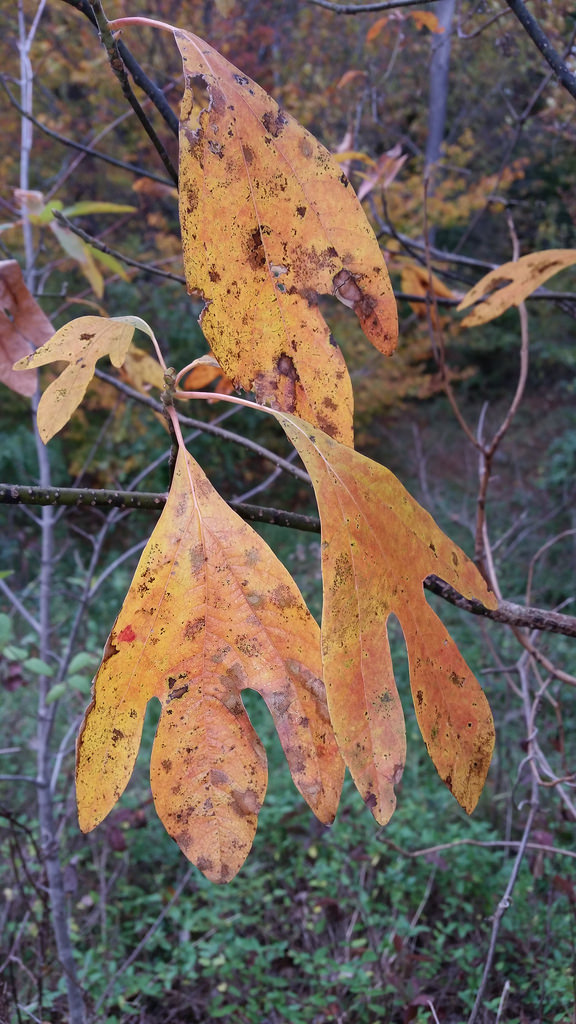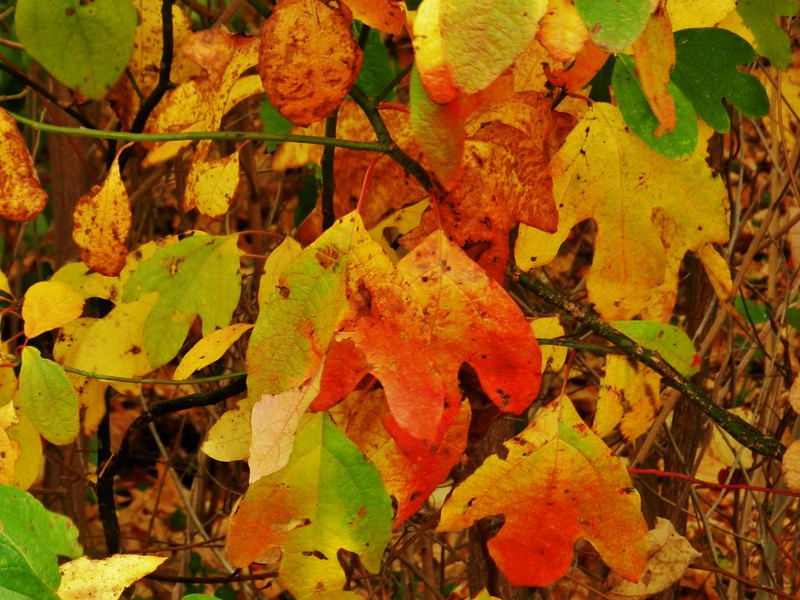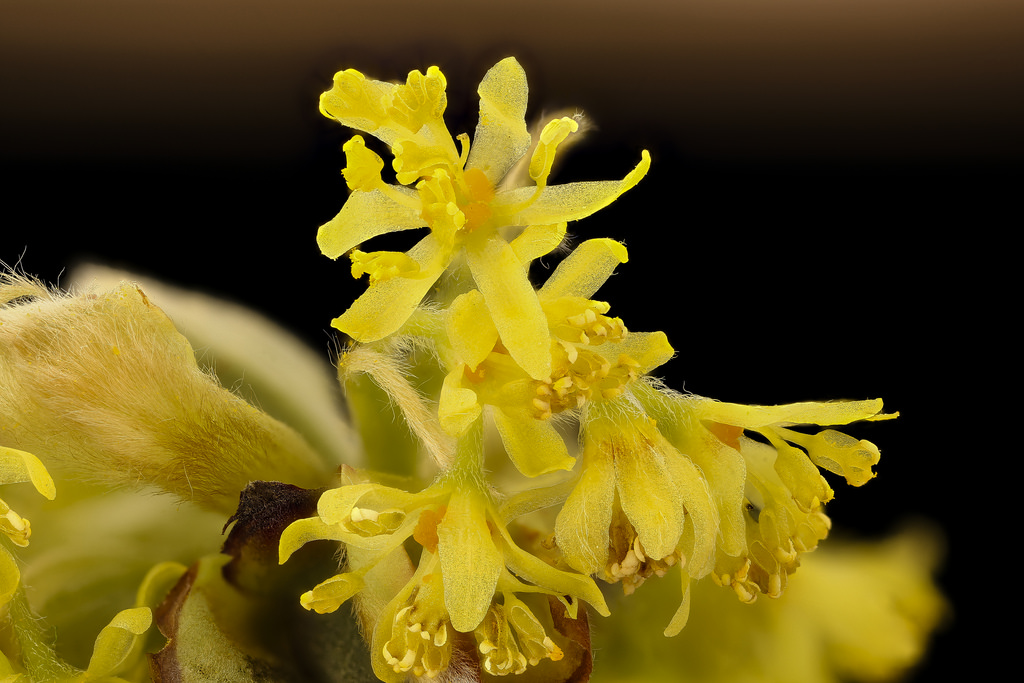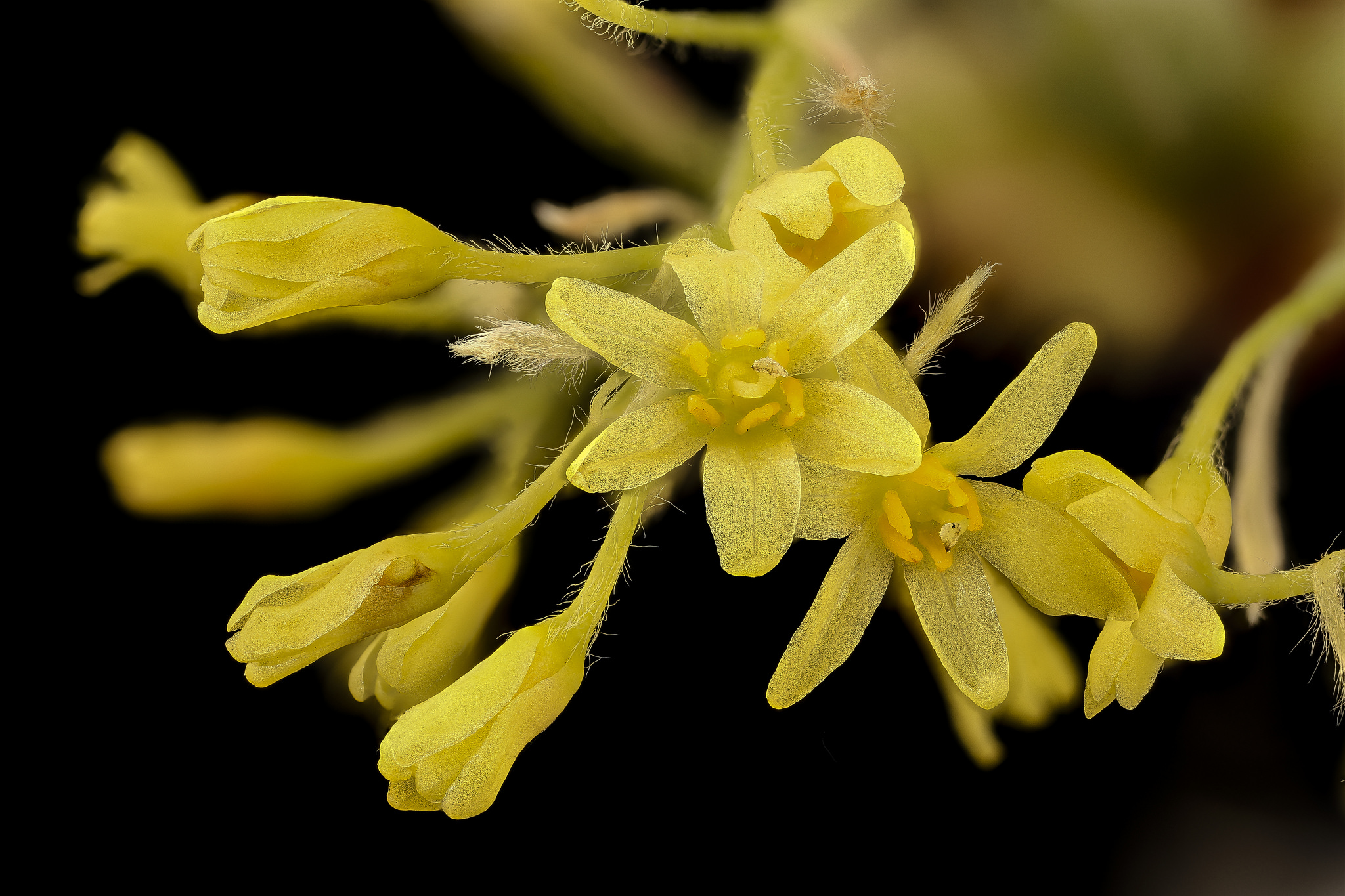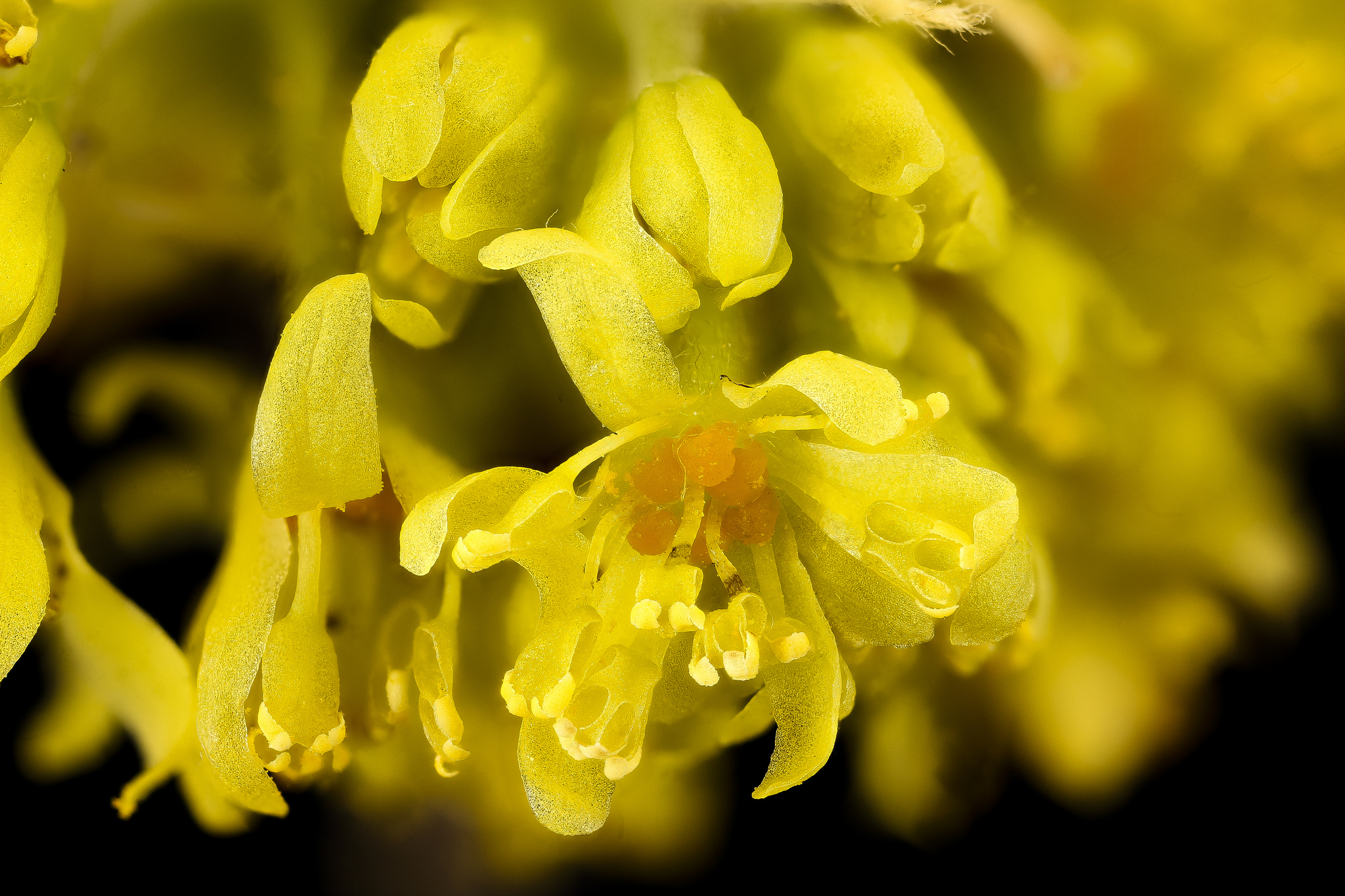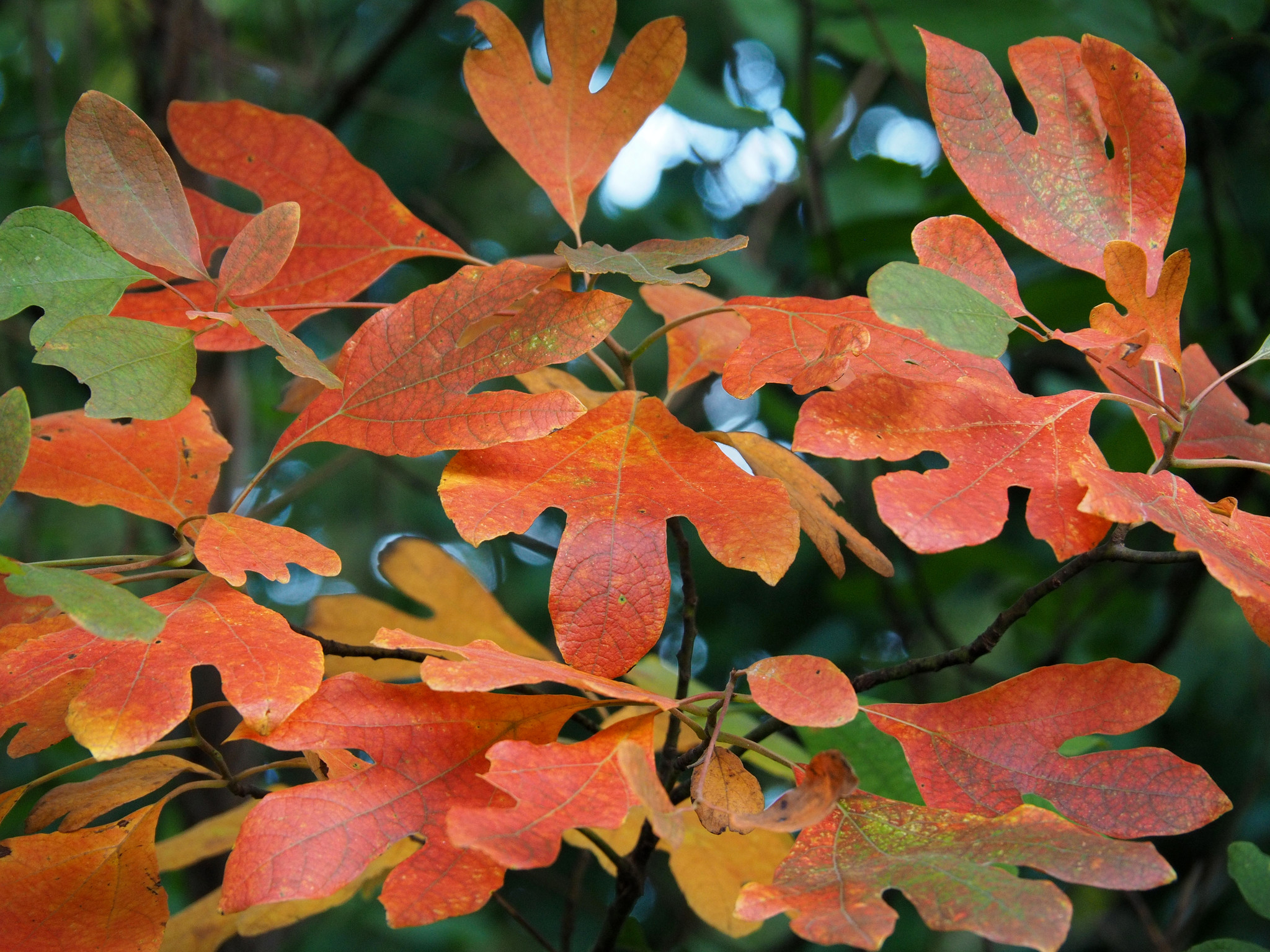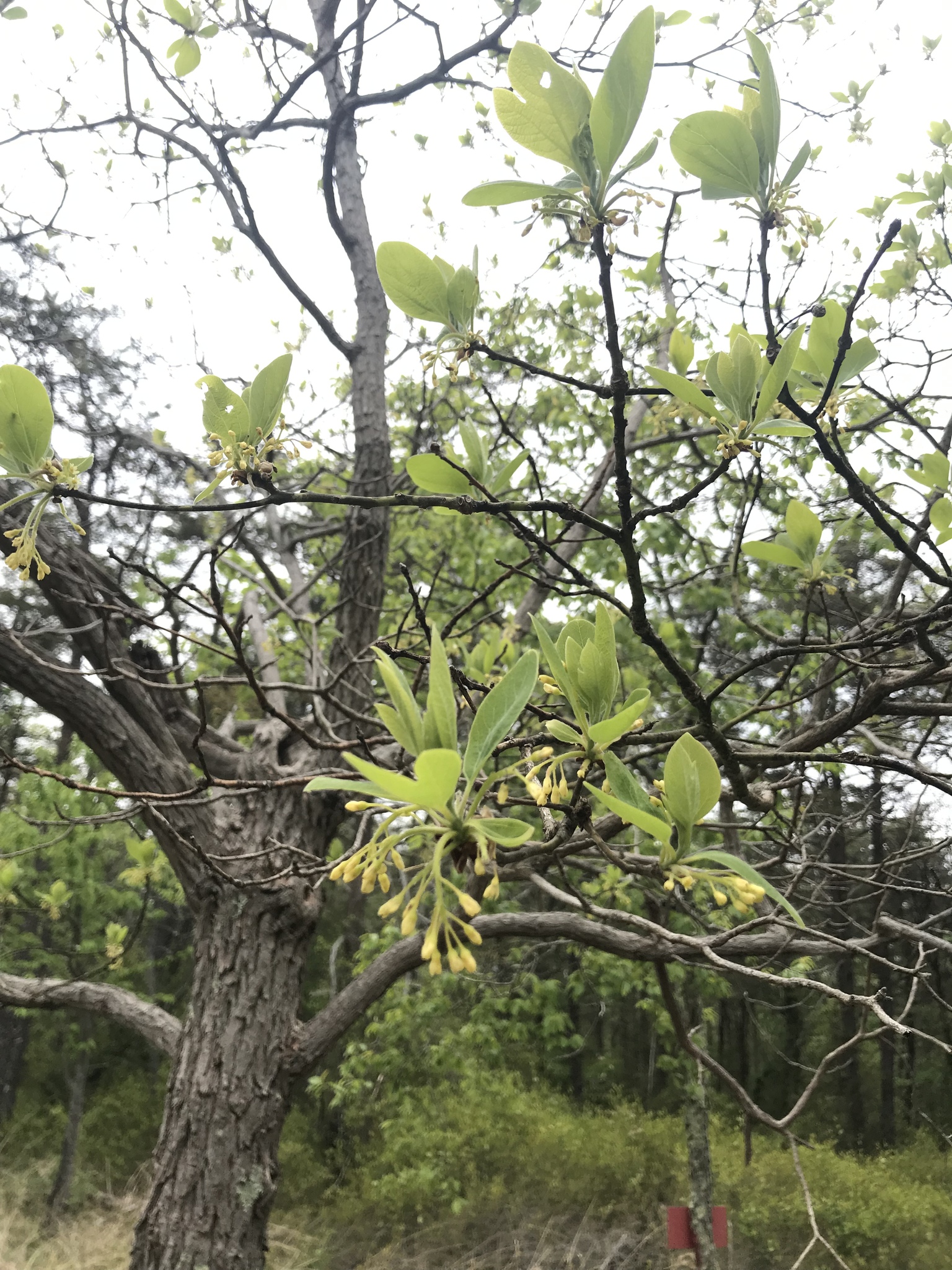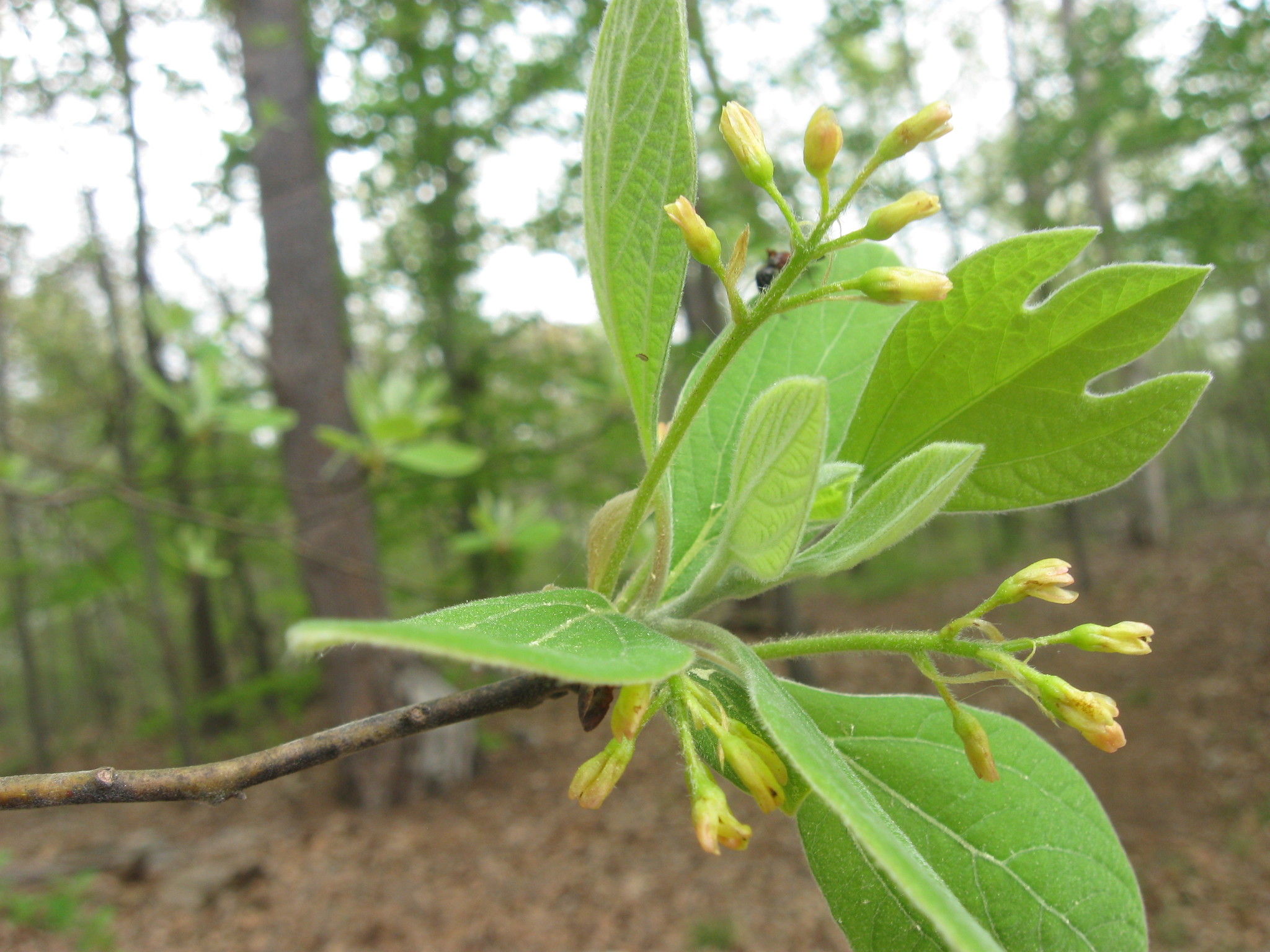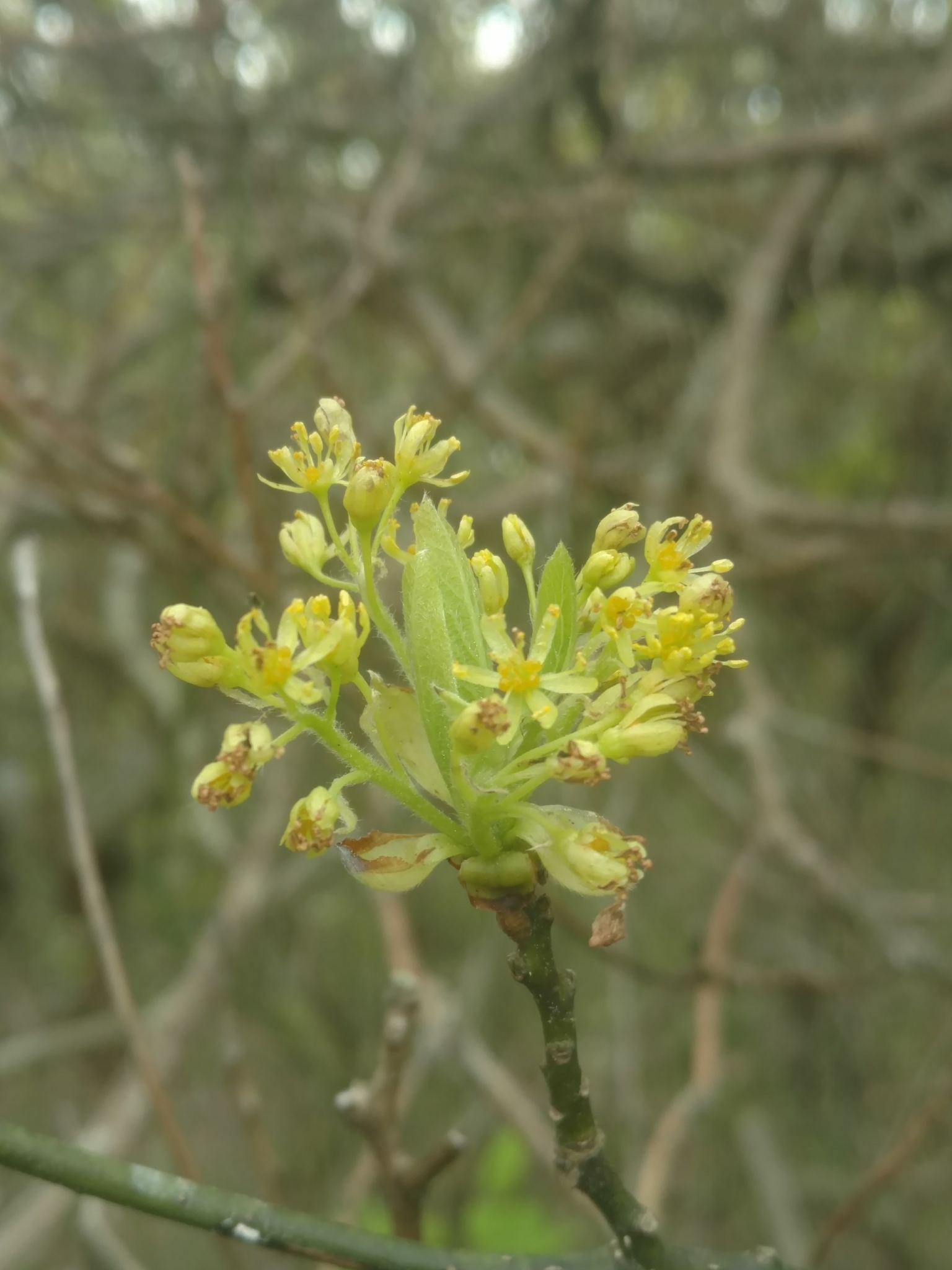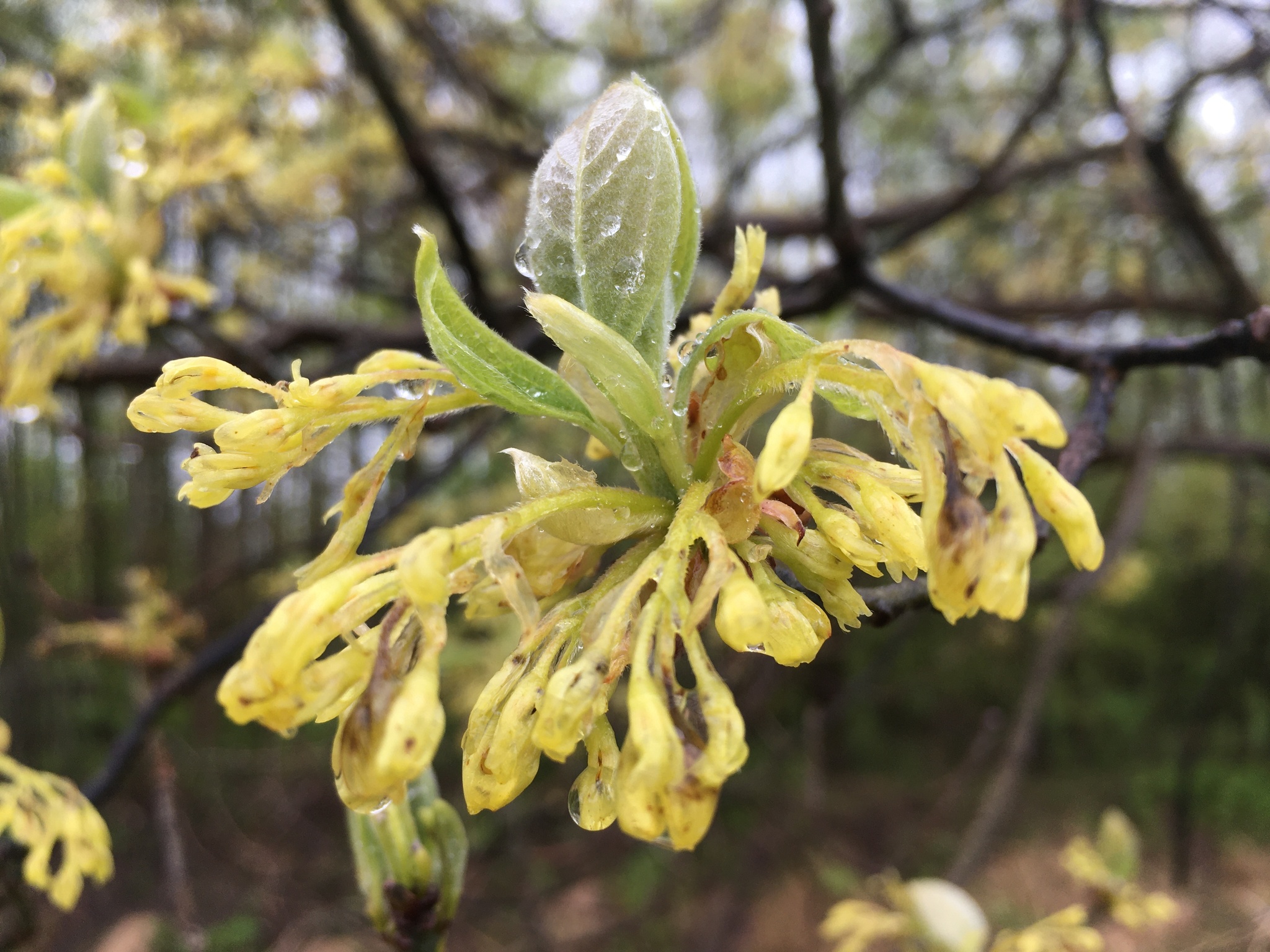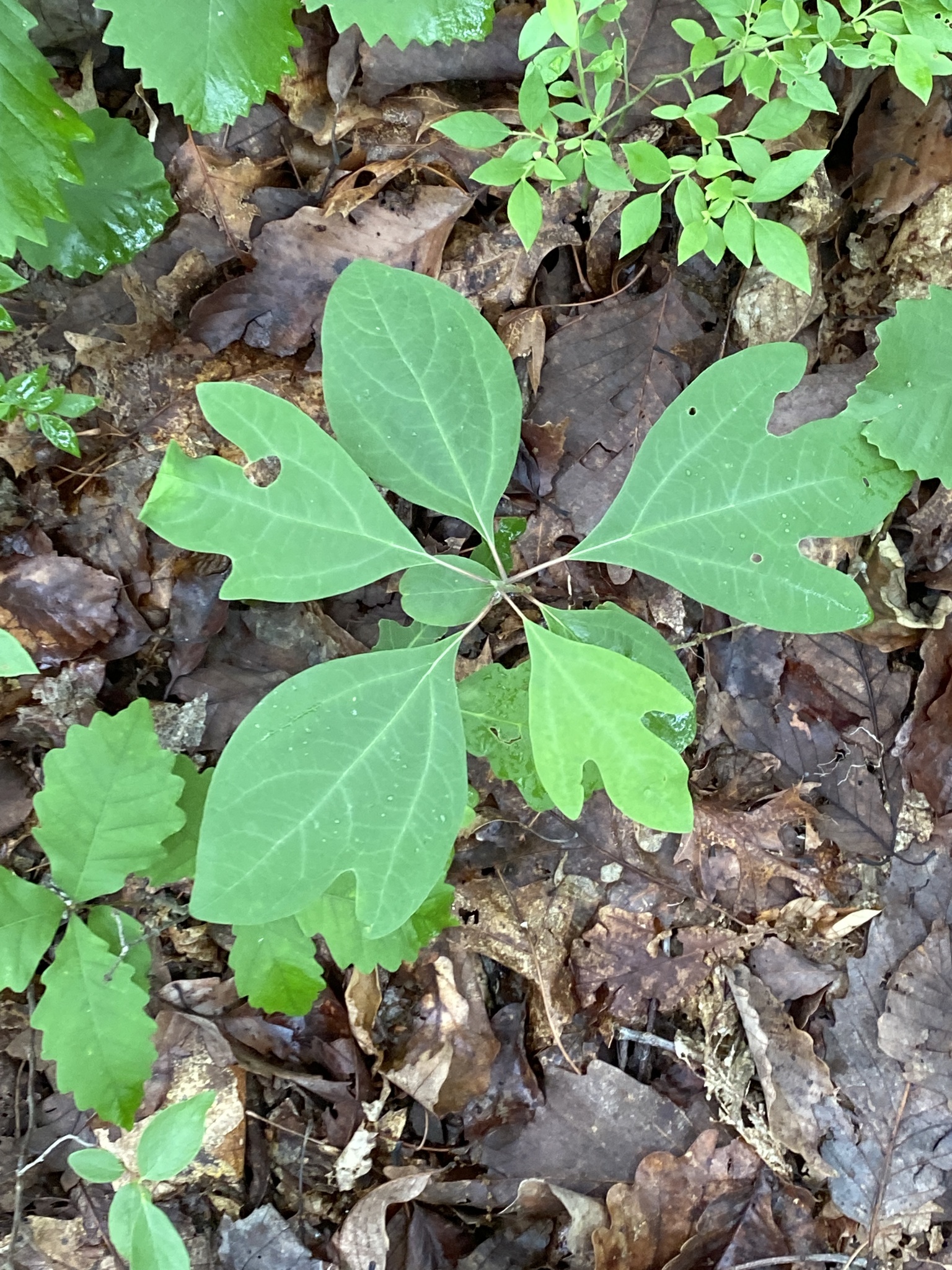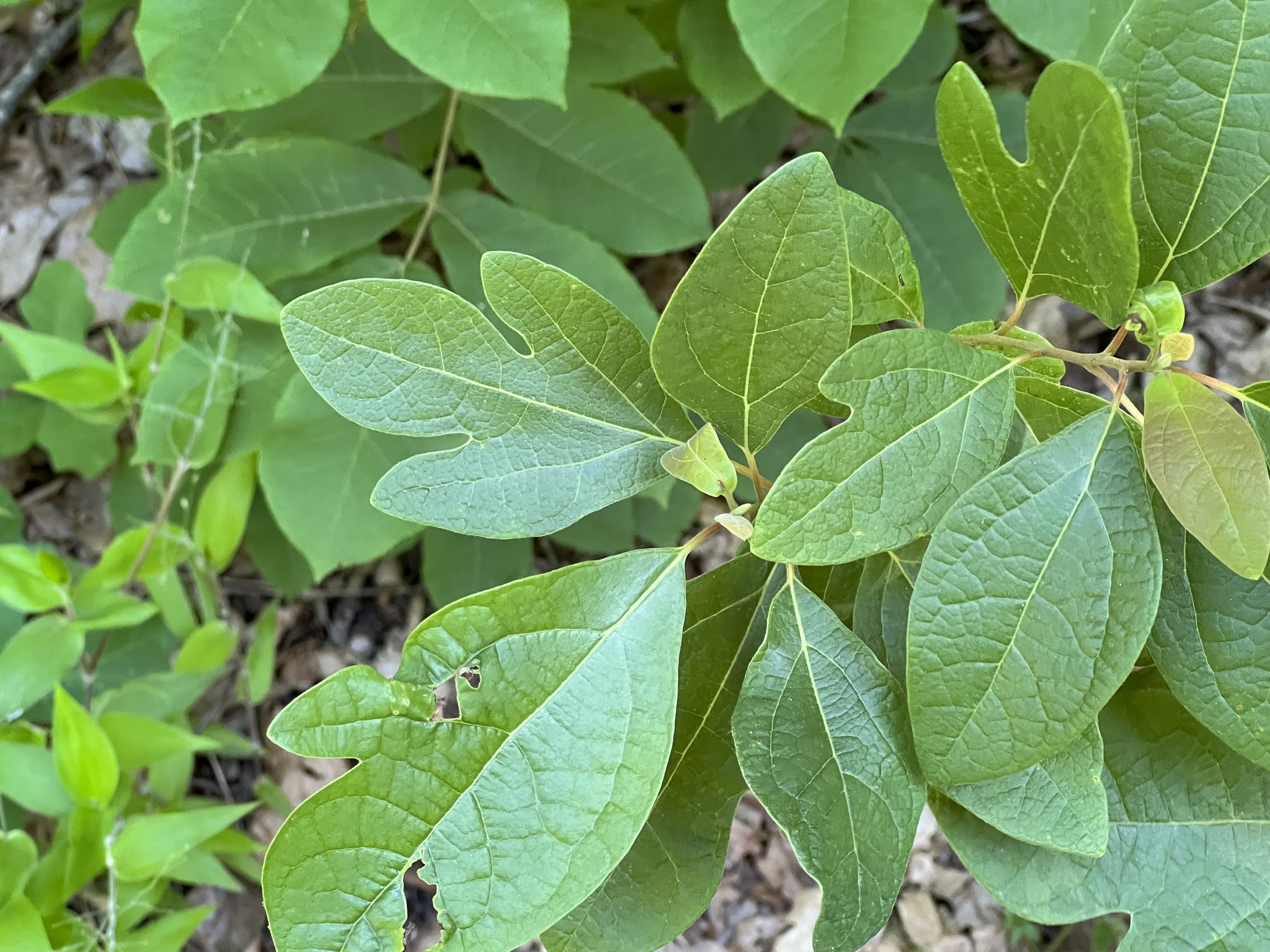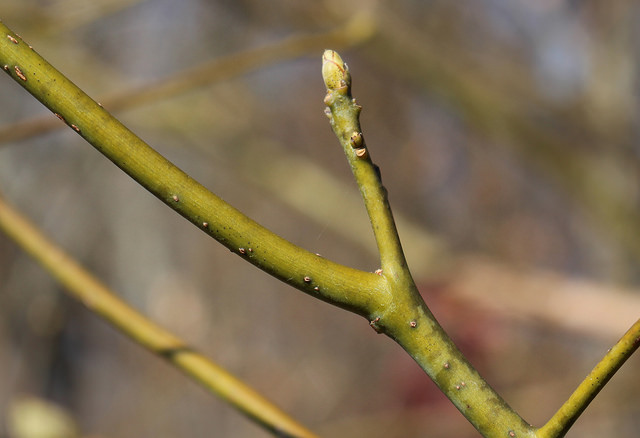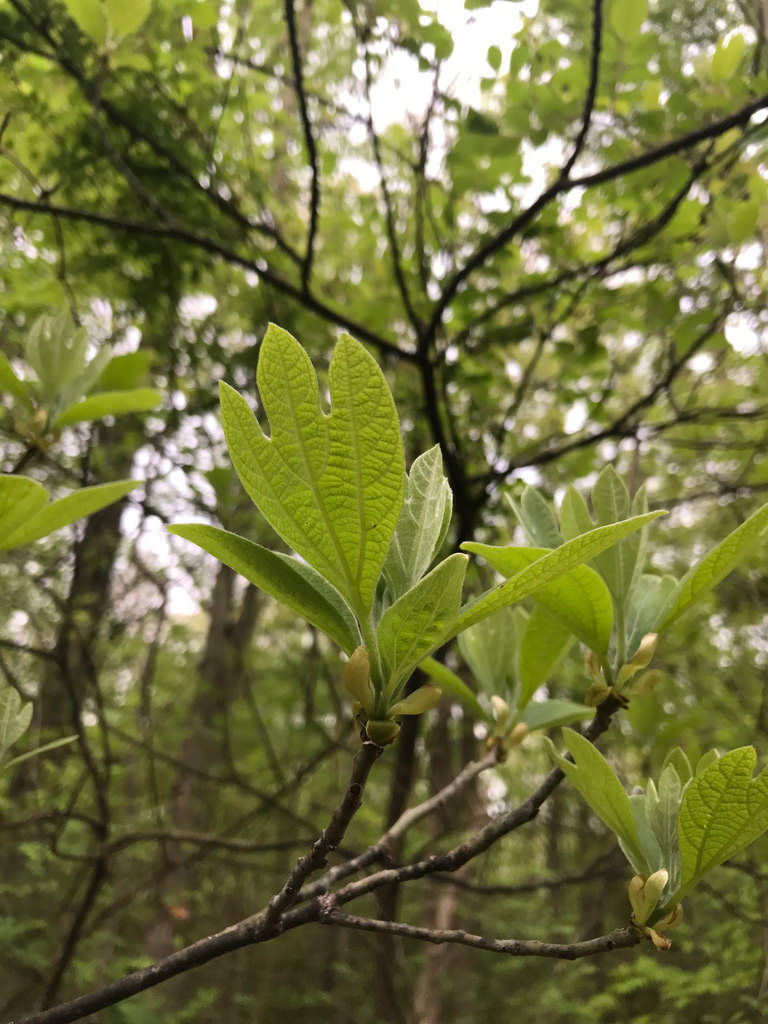

 Synonyms: Sassafras sassafras, Sassafrass albidum var. molle.
Synonyms: Sassafras sassafras, Sassafrass albidum var. molle.
























Sassafras is a small tree (or sometimes a shrub). It ranges from "southwestern Maine to Michigan and Illinois, south to Virginia and Arkansas" (Reed, 1964). It is abundant throughout Maryland, but is least common at high altitudes (Brown and Brown, 1972). Sassafras is one of four native species belonging to the Laurel Family (Lauraceae) that occur in Maryland. The others are Spicebush, Swamp Bay, and Pondspice. Of these four Laurel-Family species that occur in Maryland, only Sassafras and Spicebush are common; the other two are highly state-rare.
Leaves of Sassafras are oval to ovate and come in three shapes, all of which may be present on the same plant: unlobed, single-lobed (mitten-shaped), and two-lobed. Developing bark soon becomes rough, furrowed, and ridged, with characteristic horizontal cracks and a reddish-brown color. Flowers are small, greenish-yellow, in panicles. Fruit is an ovoid, blue or blue-black drupe whose color contrasts with the elongated red pedicels (stalks) that bear them.
In dry to mesic woods, old fields, fencerows, and other disturbed sites.
A host plant for Spicebush Swallowtail and Eastern Tiger Swallowtail. Host plant for various moth species including Imperial Moth, Tulip-tree Silk Moth, Promethea Moth, Io Moth, Woograin Leafroller Moth, Spotted Apatelodes Moth, Tulip-tree Beauty Moth, Signate Melanolophia Moth, Sassafras Caloptilia Moth, Fluid Arches Moth, and Evergreen Bagworm Moth, (Database of World's Lepidopteran Host Plants).
There are 1,403 records in the project database.
| GA | AL | WA | FR | CL | MO | HO | BA | BC | HA | CE | PG | AA | CV | CH | SM | KE | QA | CN | TA | DO | WI | SO | WO |


